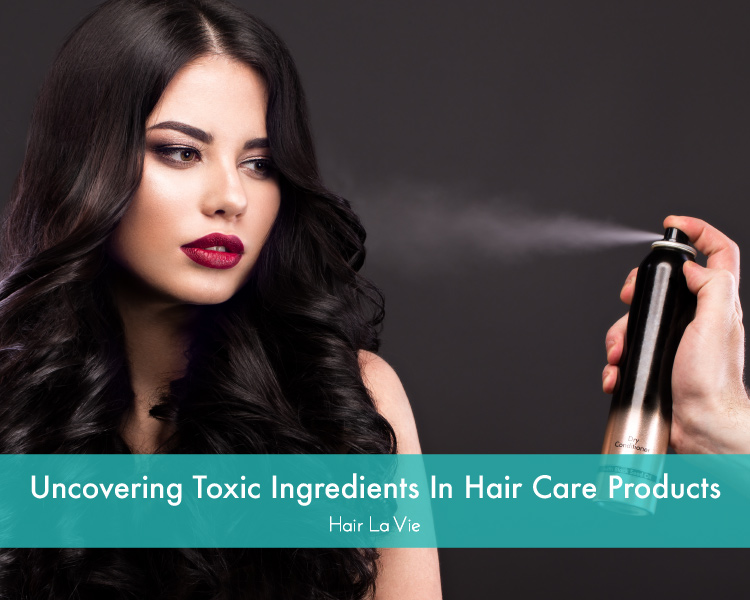Redefining Beauty: How To Avoid Harmful Contaminants In Your Hair Care Products

12 min read

When it comes to skincare, haircare and personal hygiene, we all like to make an effort. But what if that effort to be look good and be healthy was actually detrimental to you? It’s easy to get caught up in the latest way to minimize your wrinkles, make your hair shinier and moisturize your skin to its absolute softest, but there can be some serious long term consequences to these quick-fix products. In fact, over 10,000 ingredients in common cosmetic products are considered to be hazardous chemical products.
Many products that you happily apply to your skin contain contaminants and toxins such as carcinogens, pesticides, reproductive toxins, endocrine disrupters, plasticizers, degreasers and surfactants. Once these products have been applied to your skin, the residue is washed down the drain, which in turn damages the environment.
While we all want to be aware of the ingredients we’re using, reading labels on hair and beauty products can be way too much work, especially if you don’t know what you are looking for.
That’s exactly why we created this article: to help you understand which toxic ingredients you should be looking out for, and what natural products you can use to maintain your hair, skin and beauty regime without causing damage to yourself and the environment.

Heading to the drug store to buy your healthcare products is easy. However, if you value your health and the longevity of your environment, it’s worth your while to spend a little extra time reading the labels. Here is a list of commonly used main ingredients that you should try to avoid at all costs:

The good news is that you don’t have to stop using deodorant, moisturizer, makeup or shampoo. Reading product labels will help, but unfortunately many healthcare products are not required by law to list all their ingredients – a loophole that benefits them, not you. The are many companies that create their products without the use of the harmful toxins above, but there are also many natural products you can use. Using natural products is a guaranteed way to ensure that you are not exposing yourself to unnecessary chemicals and toxins. They are also significantly better for the environment – wildlife and waterways are far less likely to suffer the harmful repercussions of your beauty product use. Many natural healthcare products are probably already in your home, but if not, they are readily available to purchase. Read on to find out how you can achieve great results with common (and cheap) ingredients.
Coconut oil is incredibly useful on both your skin and your hair. It can cleanse, moisturize, remove makeup and increase immune function. Coconut oil offers antibacterial and antifungal properties and can be applied directly to your hair or skin, or ingested to improve your health from the inside out.
This is another versatile product that can be found in the supermarket. Apple cider vinegar has antifungal properties that help cleanse your skin. Like coconut oil, it can be ingested and will help balance the bacteria in your gut.
In its raw, unheated, unpasteurized and unprocessed form, honey retains all its nutrients. It has antiseptic qualities which are great for healing wounds and skin irritations. If you have acne-prone skin, apply raw honey to your face, leave for ten minutes and then rinse with warm water. Just make sure you use the raw stuff, the cute bear-shaped plastic bottles just won’t cut it (save it for the toast).
Not only are avocados delicious to eat, they are great for skin health. Full of vitamins A, D and E, avocados make a useful moisturizing treatment. They can help reduce age spots, soothe sunburnt skin and boost collagen production for a more youthful-looking complexion. The best thing about avocados is that they work to improve your skin from the inside as well as the outside, something you don’t get from most other beauty products.
Many store-bought moisturizers contain toxins and contaminants that do more harm than good. Shea butter is often an ingredient in many of these moisturizers, but you can gain all the benefits from this traditional African butter without the addition of the nasty stuff. Shea butter is suitable for all skin types, and you can make your own shea butter-based moisturizer or lip balm by adding a few drops of your preferred natural essential oils.
Very commonly linked with easing sunburnt skin, aloe vera has a long medicinal history due to its bacteria-fighting, soothing antifungal properties. The gel found inside the leaf can be used to treat skin diseases, burns and frostbite. Be careful when buying aloe vera to ensure you are receiving a product without any additional additives. For the most natural approach, source an aloe vera plant, cut one of the leaves and rub directly onto your skin.
Tea tree is a natural antibacterial, anti-fungal, anti-inflammatory, making it one of the most versatile and effective skin care treatments you can find. You can combine tea tree oil with a carrier oil and apply it directly to your skin for relief from acne, to remove makeup, soften your cuticles, eliminate fungal disease and fight foot odor.
As with care products, the only sure-fire way to make sure your cosmetic collection is toxin and contaminant-free is to make the products yourself. It might take you a little experimenting, but it’s definitely a cost-effective way to have your very own bespoke makeup collection. Making your own lipstick is a little harder, but totally worth the effort to avoid lead and other contaminants often found in your handbag essentials.
Synthetic chemicals can be hard to avoid, but with such harsh side effects it is in your best interests to opt for more natural personal care products. Many cosmetic companies are now veering towards organic ingredients, but there are also plenty of natural resources you can access to create your own products. By doing this you can be sure of all the ingredients and will reduce your risk of exposure as well as doing your part to maintain our beautiful environment.
At Hair La Vie, we know that your hair is an integral part of how you present yourself to the world and shape your authentic style.
Join our private Facebook Community for a safe, human-moderated space to share your Hair Journey, discover new natural beauty, and take steps towards becoming “you” with the help of an understanding, supportive community.
Join now for instant access to livestreams, discussions, and exclusive access to new products!
Tutorials, education, and helpful tips sent right to your inbox.
JOIN THE GROUP

At Hair La Vie, we know that your hair is an integral part of how you present yourself to the world and shape your authentic style.
Join our private Facebook Community for a safe, human-moderated space to share your Hair Journey, discover new natural beauty, and take steps towards becoming “you” with the help of an understanding, supportive community.
Join now for instant access to livestreams, discussions, and exclusive access to new products!
JOIN THE GROUP